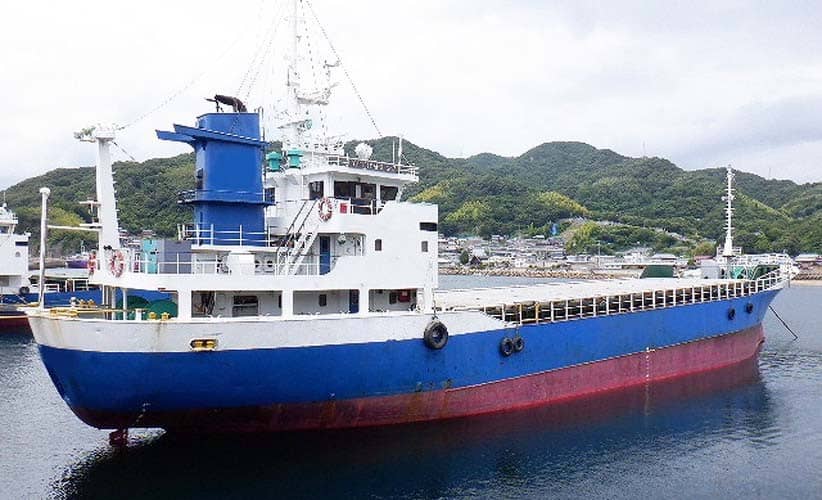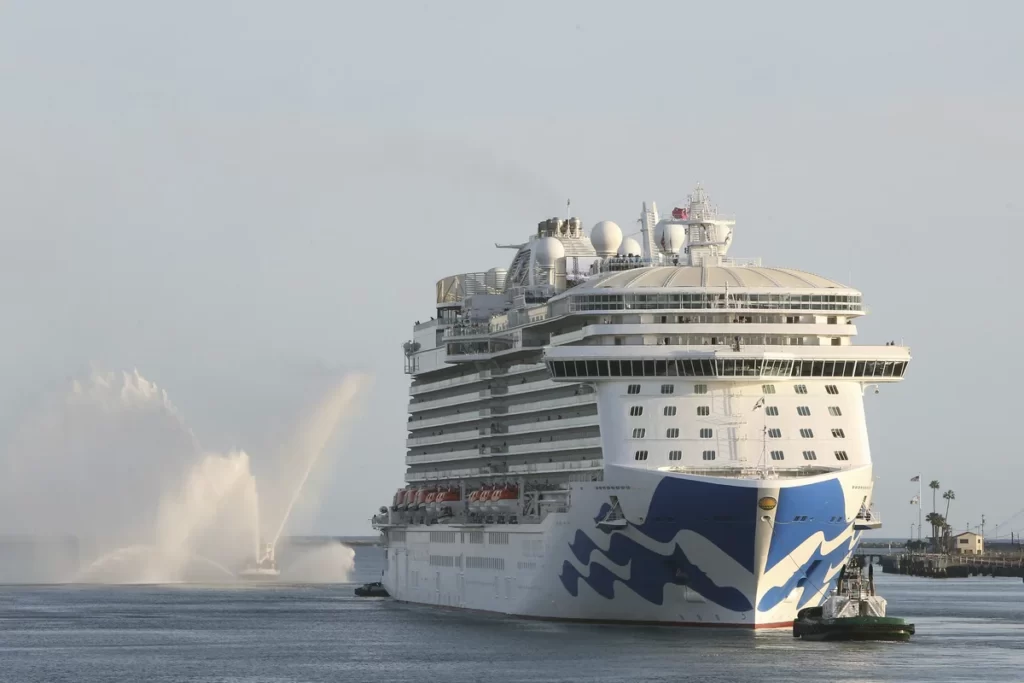Luxury cruise ships are bad polluters and 47 of the cruise ships owned by Carnival are permitted 10 times more sulfur dioxide than all of Europe’s 260 million cars. And they pay nothing. That’s the introduction by Assaad Razzouk the Angry Clean Energy Guy in episode 60. Luxury cruises promote giant boats, perfect destinations, and hassle-free travel. But this is a huge greenwashing example. Even more even incredible is that they are allowed to pollute free. They are out of sight, and out of mind. Globally, shipping is responsible for 13% of all sulphur dioxide, 15% of global NOx emissions, and 3% of CO2 emissions. That they are freely polluting and do not pay anything is a function of politics and fossil fuel industry clout!
Nitrogen and sulphur oxides cause acid rain and respiratory problems, resulting in 60,000 deaths per year and annual health costs of $330bn according to US academic research (Here and Here)
Nothing Much Changed Updated 2023
Europe’s luxury cruise ships emit as much toxic sulphur as 1bn cars says this report from Transport Environment in 2023 reviewing European cruises pre and post pandemic.

Carnival Cruise Ships are Bad Polluters
Carnival Corporation owns 100 boats and 10 brands.
- Carnival 26
- Princess 16
- Holland America 10
- Cunard 3
- Seabourne 5
- Aida (Germany) 14
- Costa 10
- P&O UK 5
- P&O Australia 3
Since 2002 Carnival has been paying heavy fines for polluting but only when they are caught red-handed e.g. 2016 Carnival paid $40m for dumping oil contaminated waste into the sea. The Caribbean Princess used several tactics, including a device called a “magic pipe,” to circumvent water-cleaning mechanisms and digital devices monitoring oil levels., as did 4 other ships. But in 2020, they were fined again for $20m for violating their probation breach and covering it up again.
Most Cruise Ships are bad!
Friends of the Earth ranked 18 major cruise ships on 4 different criteria including sewage treatment, air pollution, water quality, and transparency, None were ranked A. Just 1 got a B-, One had a C, 6 had D’s and 10 got an F for fail. All Carnival boats got an F.
Global Shipping
At the end of 2020, there were around 62,100 vessels in the world trading fleet, with a total deadweight tonnage of 2,033 million DWT. By deadweight tonnage, the world fleet has doubled in size since 2005 and despite the growth slowing in recent years, it has still increased by 3% since 2019.
- About 90% of trade goods are via shipping
- The shipping industry emits 940 million tonnes of CO2 annually, or 2.5% of the world’s total CO2 emissions.
- These carbon emissions are expected to increase to over 17% by 2050
- Emit over 17% of global sulfur dioxide emissions
- Emit 15% of nitrous oxide (NOx) emissions
- Many of these ships are even worse than cruise liners.
- Ships are out of sight of most governments, and the drive is to save money at every opportunity.
- Shipping as a group would be the 6th biggest country globally for pollution
- If European shipping were a country, it would be the 8th largest polluter in the EU, pumping 139 million tonnes of CO2 into the atmosphere in 2018 alone. (Greenwatch)
- Ships carrying goods to and from the UK emitted more CO2 than all the cars in Britain’s 15 largest cities.
Shipping Fuel is Indirect Fossil Fuel Subsidy.
Industry uses the dirtiest fuel, called bunker fuel which is basically what refineries don’t want. This bunker fuel is an environmental nightmare. Full of sulphur, heavy metals. Most shipping movement is within 400km of the coasts, and the emissions travel to land.
- Shipping receives a massive subsidy – up to €24 billion (£20 billion) a year – from European governments, because it is exempt from fuel tax
- This is also an indirect subsidy to oil and gas industry because without the shipping market to sell this bunker fuel they would need to pay for the cleanup and disposal. It is estimated that this would cost about $450billion if they had to pay for the cleanup.
End of Fossil Fuel will Reduce Shipping Emissions
90% of global trade travel on ships. A good part is that 40% of the world’s shipping is carrying fossil fuel from one place to another to burn. So stopping burning fossil fuels will immediately reduce emissions by 50%.
Regulations Are Poor
International Maritime Organisation (IMO) is a UN Agency but it appears to be not interested in the protection of marine and atmospheric pollution. The maritime Industry participates and decides what actions to take. (None!) E.g. Has not managed to negotiate any substantial reduction in emissions. E.g. 2020 developed a package of reforms but it continues to resist or plan for any change to zero emissions by 2050. The only shipping company that has a plant is Merske
Shipping is the only sector in the world not subject to cutting greenhouse gas emissions, and was left out of the UN’s Paris accord on this pollution.
In 2020 the IMO introduced a reduction in SO3 and estimated that the new limit of 0.5% sulphur content compared with the previous limit of 3.5%, enforced under the international convention for the prevention of pollution from ships – will cut sulphur oxide emissions from ships by 77%, an annual reduction of about 8.5m tonnes. But there is no enforcement on the ocean and many vessels are registered in countries with little or no compliance.
Actions to Take
- Stop ships burning bunker fuel in port. Connect them to the land grid with renewable energy sources
- Get methanol powered ships by 2024
- Do not allow the use of methane gas (LNG or “natural gas”) to power ships as methane emissions in the production of the LNG/CNG contribute more emissions than dirty bunker fuel.
- LIke Merkes, bring forward net carbon from 2050 to 2040
Can Ammonia Reduce Carbon Emissions
Today 80% of ammonia produced is used exclusively for the fertiliser industry. Ammonia is looking like an attractive alternative. If 30% of shipping switched to ammonia to use as a fuel, then the current production would have to nearly double. That is what FFI from Fortescue Metals is banking on with the production of green H2 to make ammonia. They have purchased a ship MMA Leveque to convert to ammonia for testing and Eidesvik Offshore, Aker BP and Almaare testing out 2 other ships.
Greenwashing is Rife
The industry is keen to promote green credentials but most of these technologies are simply greenwashing.
- No ballast system
- LNG for propulsion
- LNG for auxiliary enging
- Sulphur scrubbing systems
- Advanced rudder and propellor systems
- Speed nozzles
- Hull pian
- Waste heat recovery system
- Exhause gas recirculation
- Water in fuel to reduce temperature in engine
- Improved pump and cooling system
- Sail and kite propulsion system
- Fuel and solar cell propulsion
- Sandwich plate system







Will Electric Ships Replace Fossil Fuel
FleetZero, a New Orleans startup in the maritime industry thinks that electrification is the only way to decarbonize this monolithic industry. The company, founded by a team of U.S. Merchant Marine Academy graduates, is working to develop an entire fleet of long-range electric cargo ships that run on a battery-swapping system. Until their flagship takes to the sea, the company is making existing diesel-powered ships better by converting them to battery-electric operations.
They focus on the smaller ships and say they will be very cost-competitive with almost no maintenance, and therefore reduced staff.
FleetZero is planning the first in 2023, with a marine battery system that offers 2 MWh of energy storage per pack. It is housed in a low-height shipping container of 20 feet by five feet with a weight of eight tonnes. When the ship comes into port, the drained batteries in the container carrier are swapped out for new ones. The battery packs have been made exceptionally rugged to withstand inversion, shock, and excess g-forces.









